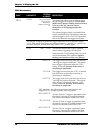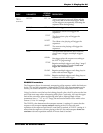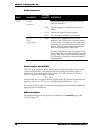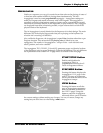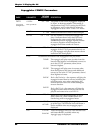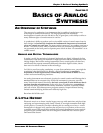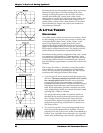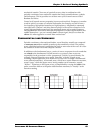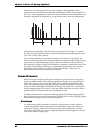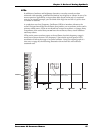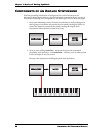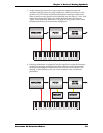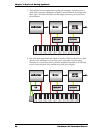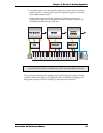
Chapter 3: Basics of Analog Synthesis
84 ANDROMEDA A6 REFERENCE MANUAL
Harmonics, like other periodic waves, have frequency and amplitude. Their
frequencies are musical intervals above the fundamental which can be thought of as
the “root”. Their amplitudes are also based on the loudness of the fundamental: each
harmonic diminishes in amplitude as you get further away from the fundamental.
1 kHz 2 kHz 5 kHz 10 kHz 20 kHz
FREQUENCY
AMPLITUDE
FUNDAMENTAL HARMONIC
PARTIALS
Harmonics also determine if the waveform is perceived to be “bright” or “muted”:
the more harmonics present in the waveform, the brighter the sound appears to our
ears. This is where filters come in.
In an analog synthesizer, the harmonic content of the sound is controlled by the
filters: circuitry that controls the amount of harmonics present in the Program. By its
very name, it’s implied that these circuits “filter out” harmonics. This is true: the
filters provide a range or bandwidth of harmonics, sometimes called the spectrum, that
the sound will contain by filtering out or removing the harmonics of a waveform
generated by the oscillators. It is also possible to set the filter “wide open” (at
maximum) so that all of the harmonics are present.
SOUND DYNAMICS
Most of us aren’t conscious of this, but virtually every sound we hear every day is
dynamic: audible sounds make subtle yet significant changes as we are listening to
them. Take a piano note, for example. When a key is played and held down, the
sound the vibrating strings make goes through numerous fluctuations as the note
fades out. When the hammer first strikes the strings, this initial “hit” is the loudest
and the brightest part of the sound. As the note fades, notice that not only is there a
gradual decrease in loudness but also in brightness as well.
Consider the differences in loudness and tonal quality that different playing styles
have on just about any acoustic instrument. Think about how staccato playing sounds
different than playing legato on the same instrument.
Envelopes
A synthesizer provides a number of electronic controls that are used to shape or
contour the overall sound as it plays out over the duration of the note. We’re not
referring to Velocity, Aftertouch or Pressure here but the synthesizer’s envelopes:
electronic circuits that you can set to shape the loudness and the brightness (or lack
of it) of the sound as it plays out.



